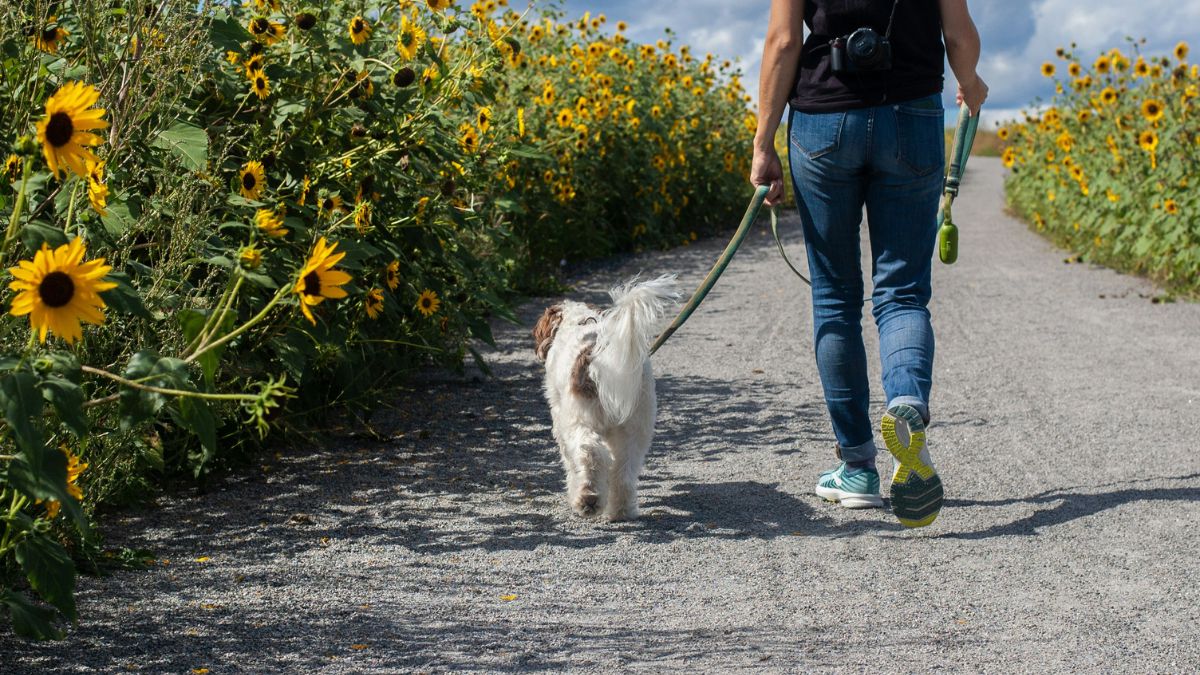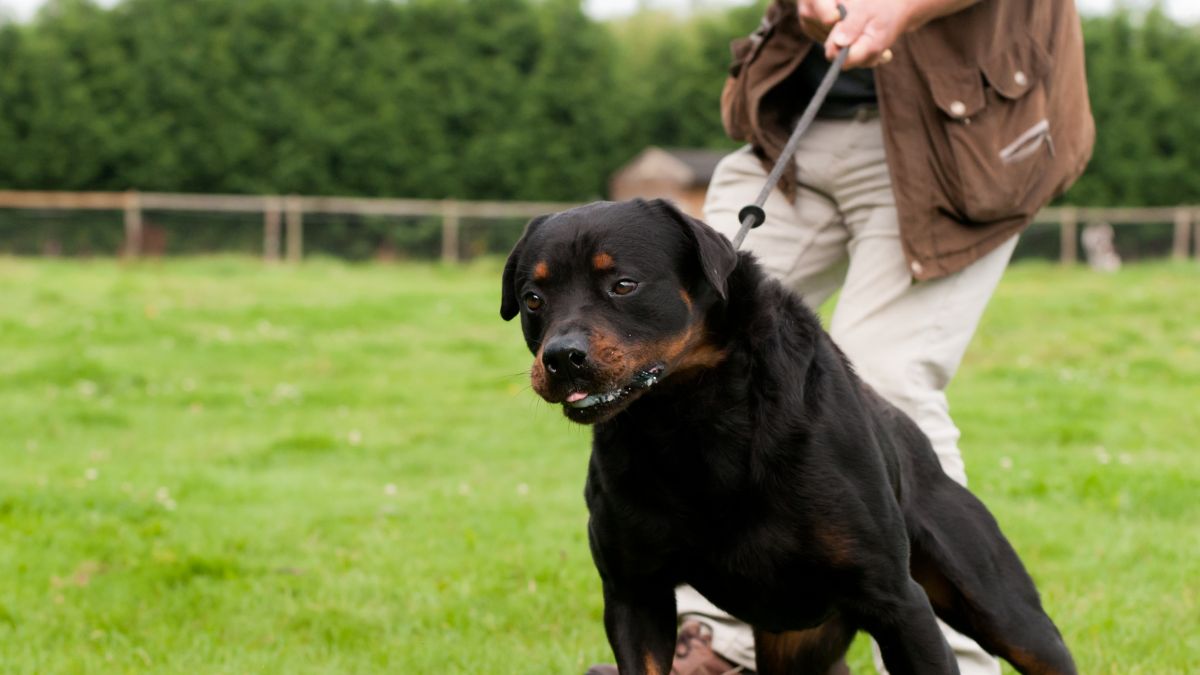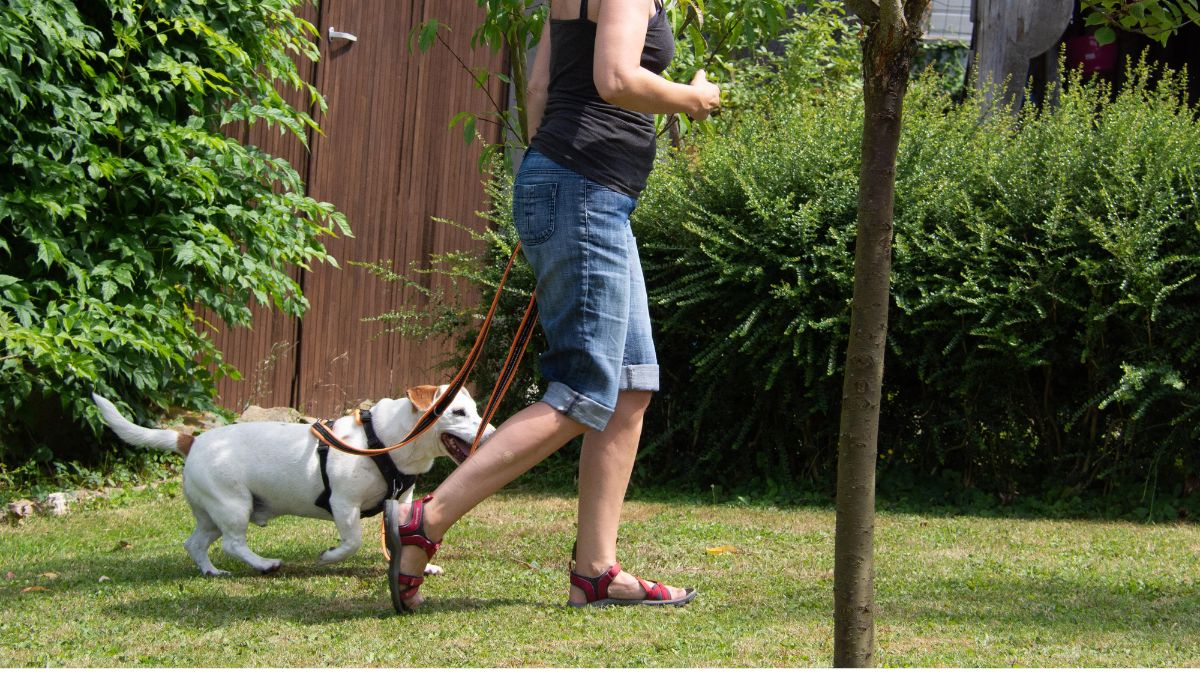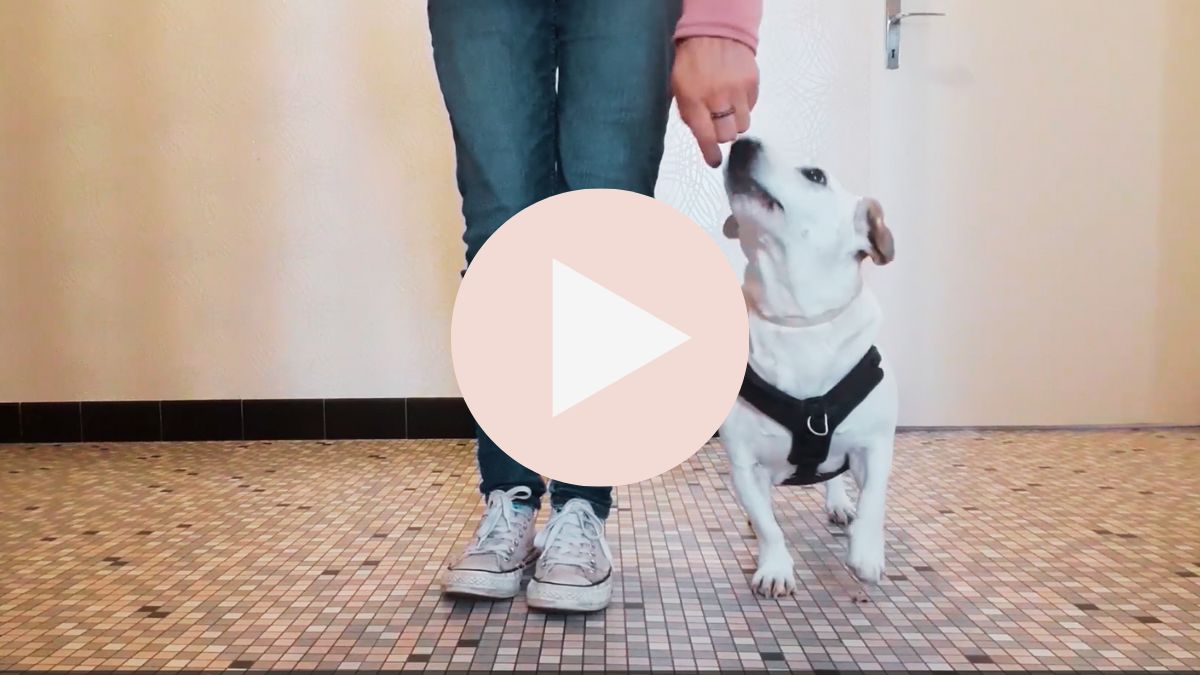🐕🦺 How Do I Get My Dog to Stop Pulling on Lead?

Does your dog drag you down the street? Here’s how to stop lead pulling gently and build calmer, happier walks based on trust and connection.
⠀
How To Stop Your Dog Pulling on Lead
(A kind, science-backed approach that really works)
If you’ve ever come home from a walk feeling like your shoulder might pop out of its socket, you won't be surprised to discover that lead pulling is one of the most common frustrations dog owners face, and it can turn what should be a peaceful stroll into a daily tug-of-war.
The equipment isn’t the problem but the emotion behind the pulling is.
Once you understand what’s driving the behaviour and teach your dog a calmer way to move alongside you, everything changes.
It shows exactly how I teach loose-lead walking, and you might be surprised to find that it starts before you even clip the lead on!
Why Dogs Pull on the Lead
Dogs don’t pull because they’re naughty or trying to be “in charge.” They pull because walking on a lead doesn’t come naturally.

Dogs pull on lead because⠀
- The world is exciting, full of smells, movement, and things to explore.
- Their stride is faster than ours, so they naturally move ahead quicker than we do.
- Dogs can be excited or anxious outdoors, and pulling helps them get to or away from things faster.
When we respond by pulling back, tension builds on both ends of the lead. Over time, the walk becomes a cycle of pressure, frustration, and stress for both of you.
⠀
Do Dogs Grow Out of Lead Pulling?
Sadly, no, it's unlikely your dog will just grow out of lead pulling.
In fact, the more your dog practises pulling, the stronger that habit becomes.
The great news is that calm walking can be taught at any age. Puppies, adolescents, and even seasoned tuggers can all learn new habits through patient, reward-based training.
⠀
How To Tell if Your Dog Is Enjoying Their Walk
A relaxed walk is about emotional state, not just speed. Signs your dog is genuinely enjoying themselves include:
🐾 Loose, wiggly body language
🐾 Sniffing calmly rather than scanning frantically
🐾 Ears moving freely, tail relaxed
🐾 Checking in with you now and then
If your dog is panting, lunging, or constantly straining on the end of the lead, or alternatively if you have to drag them along, they’re likely over-aroused or overly anxious.
⠀
The Myth of “Instant” Fixes
A quick Google search will offer “stop pulling instantly” tricks, but lasting change doesn’t happen instantly.
That said, small tweaks can make a big difference fast.
Try this on your next walk:
1️⃣ Pick your route wisely. Avoid known triggers like barking dogs or high-traffic areas until your dog has more coping skills.
2️⃣ Notice tension early. The moment the lead tightens, calmly change direction. You can always circle back.
3️⃣ Reward proximity. Every time the lead slackens, praise or reward quietly. This teaches your dog that being near you feels great.
4️⃣ Keep sessions short. A calm five-minute walk is far more valuable than a stressful half hour.
Calm repetition builds reliability. And reliability brings relief.
⠀
Best Harness and Lead for Loose-Lead Walking
For most dogs, a well-fitted dual-clip harness and double-ended lead are ideal. They give you gentle steering control without pressure on the neck.
Avoid retractable leads and any aversive tools like choke or prong collars as these increase stress and damage trust.

⠀
Teaching Your Dog to Walk Beside You
The Proximity Zone is your dog’s comfort zone beside you — that sweet spot where they feel relaxed and connected.
Instead of forcing your dog into a “heel” position, show them that being close to you is rewarding.
Start somewhere quiet, move slowly, and mark every moment of a loose lead.
⠀⠀
Puppies, Big Dogs, and Everything In Between
Whatever your dog’s age or size, prevention and patience are key.
🐾 For puppies:
- Reward every moment they choose to be near you — in the house, garden, or on quiet paths.
- Let them sniff and explore at their own pace.
Mark and reward calm pauses by your side.
These early “good choices” are the foundations of peaceful future walks.
🐾 For large or strong dogs:
- Use a sturdy dual-clip harness for gentle guidance.
- Keep generous distance from triggers — prevention beats reaction.
- Practise focus games like soft-name check-ins to keep connection strong.
Common Mistakes That Keep Pulling Alive
🚫 Repeating “heel” without teaching what it means
🚫 Allowing long stretches of tension
🚫 Yanking back on the lead (it creates an opposition reflex)
🚫 Ignoring calm behaviour instead of rewarding it
🚫 Walking in environments your dog isn’t ready for
Small changes in your own rhythm and awareness can completely shift the tone of your walks.
⠀
What Calm, Connected Walks Look Like
When it clicks, you’ll notice your dog walking more slowly, checking in with you, and sighing instead of straining. You’ll feel your own body relax, too.
That’s the beauty of relationship-based walking. It’s not just about the lead, it’s about trust.
⠀
Next Steps
If you’d love to enjoy peaceful, shoulder-friendly walks, start by watching my short Proximity Zone demo video here:

You’ve got this — one calm step at a time. 💛
💌 Final Thought
Loose-lead walking isn’t about control. It’s about connection, confidence, and trust, built one gentle moment at a time.
⠀
Categories: : Over-arousal & Manners
 Hazel Johnson
Hazel Johnson 